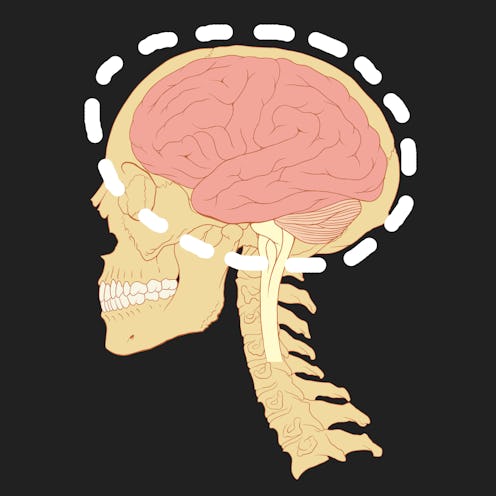Life
How Does MDMA Affect Your Brain?

Most of us associate the drug MDMA, more commonly referred to on the street as Molly or Ecstasy, as being responsible for that feel-good high, but many of us are probably completely unaware of what MDMA actually does to the brain to make us feel that way, or what the drug's potential effects are independent of recreational use. A new video from AsapSCIENCE breaks down just how MDMA works — and why it's such a popular party drug.
The animated video explains the neurochemistry behind MDMA in a way that's easy to understand. It starts by explaining the difference between the mainstream forms of MDMA. Ecstasy, or E, is MDMA that has been chemically altered to include additives such as caffeine or amphetamine. On the other hand, Molly is supposed to be a purer form of MDMA that appears in capsules or powder. The reality, however, is that people who take Molly nowadays are probably ingesting a mixture of harmful synthetic drugs that have been manufactured in labs.
In any case, AsapSCIENCE tells us that pure MDMA affects the neurotransmitters (chemicals in our body that relay messages) in our brain. In particular, the neurotransmitter serotonin is responsible for the alterations in mood that result from taking MDMA. Thanks to serotonin, our first response after taking MDMA is to have that high, happy-go-lucky, I-wish-that-I-could-bake-a-cake-made-out-of-rainbows-and-smiles kind of feeling. After three to eight hours, however, when the drug has left your system, it has destroyed more serotonin than usual, meaning that you're in for a depressed feeling that could hang around for days. Take a look for yourself:
Serotonin is also linked to an inability to sleep, which AsapSCIENCE speculates is one of the reasons why Molly and Ecstasy have come to be such staple nightlife drugs. Unfortunately, this means that you're left exhausted (and potentially hungover) after they wear off. Researchers have also linked both forms of MDMA to excessive sweating, hence the popular phrase "popped a Molly I'm sweatin'."
Some things also worth mentioning that are not addressed in the video are the long-term effects of taking MDMA, which include long-lasting brain damage and memory loss, and (in severe cases) death. Considering the fact that "a third of students at universities say they've tried it," it's important to be aware of these serious risks.
Still, some scientists think there are some benefits to be gleaned from the drug, which AsapSCIENCE points out might actually have therapeutic properties. Since MDMA helps to increase certain areas of brain communication, it may actually serve as a therapy for PTSD and anxiety in the future. Of course, there's still the issue that MDMA can result in brain damage, which leaves its potential health benefits up in the air.
As of now, however, MDMA remains a party drug made popular in songs and music videos, and circulated around college campuses. Like most narcotics, it also happens to be illegal, and the Drug Enforcement Administration is looking to increase bans or restrict access to MDMA consumption. Still, many speculate that MDMA isn't going away anytime soon, so it's important to understand the science behind the drug and its potential consequences. But even as Molly and Ecstasy become increasingly prevalent among partygoers, I still hold out hope for the day when scientists are able to harness its properties for a greater good.
Images: J E Theriot/Flickr; Giphy